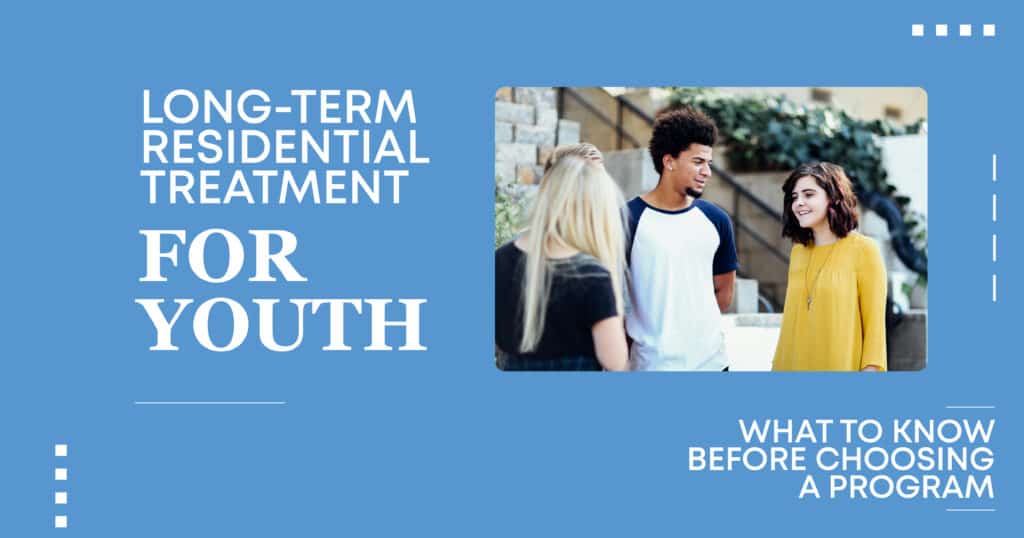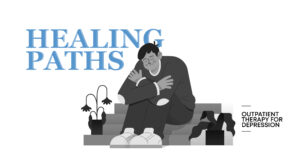Long-term residential treatment for youth can feel like a last resort, but in many cases, it’s the lifeline families need. Especially when nothing else seems to help. It’s a serious decision, no doubt, and not one to be rushed.
When a teen is grappling with deep emotional pain, substance issues, or unsafe behaviors, the right program could completely change the path of their future.
If you’re here, you’re probably already thinking about this option. Let’s walk through everything you need to know.
What Is Long-Term Residential Treatment for Youth?
Let’s break it down. Long-term residential treatment for youth is a live-in program that’s designed to offer full-time therapeutic support to teenagers dealing with intense emotional, psychological, or behavioral challenges. These programs aren’t quick fixes. They usually run for several months, sometimes even up to a year or more.
And no, this isn’t just a “boot camp” or a place to “send troubled kids away.” These programs are highly structured, and they focus on healing, not punishment.
So what’s typically included?
- Individual, group, or family therapy
- Academic support (some even have fully accredited schools)
- Recreational therapies like art, music, and nature walks
- Life skills training (knowing how to cope in the world matters)
- Medical and psychiatric care
In short, it’s a holistic approach. The goal is to help teens uncover the why behind their struggles and learn how to deal with them in a healthy and sustainable way.
When Short-Term Options Aren’t Enough
Some teens bounce back quickly with short-term help. This can be 30 to 90 days in outpatient therapy or a brief stay at a hospital. But for others, it just doesn’t cut it.
Here’s when short-term care may fall short:
- The behavior is getting worse, not better
- Your teen poses a risk to themselves or others
- They’ve done short-term programs already, and nothing’s changed
- Your home environment isn’t supportive or safe enough
That’s where long-term residential treatment for youth steps in. It gives teens space. Both literal and emotional space, to focus on healing. With time, consistency, and the right support, real change can happen.
Hillside Horizon
Signs Your Teen May Need Residential Care
It’s never easy to admit your child might need intensive help. But being honest about the signs is key.
Here are a few red flags that long-term treatment might be needed:
- Ongoing drug or alcohol use despite consequences
- Intense mood swings, depression, or anxiety
- Self-harming behaviors or talk of suicide
- Risky, reckless, or violent actions
- Major drop in school performance
- Outpatient care has failed
- The home situation isn’t enough to support healing
If even one of these sounds familiar, it might be time to consider a professional evaluation. Don’t wait until it’s a crisis. A mental health provider can help guide you from here.
What to Expect Inside a Residential Treatment Program
So, what’s it like inside one of these places? It’s a structured, safe, healing-centered environment for you and your teen.
Before your teen even begins, they’ll usually go through an in-depth intake process. That means assessments: physical, mental, and emotional, to get a full picture of what’s going on. That info helps shape a custom treatment plan.
Treatment might involve:
- Talk therapy (one-on-one, group, or with the family)
- Medication (if needed)
- Regular evaluations and plan adjustments based on progress
Daily structure is a big deal too, especially in residential treatment centers for youth Medicaid programs. That routine gives teens something to hold on to while they rebuild themselves.
Here’s a sample day:
- Morning. Wake-up, hygiene, maybe a short walk or yoga
- Meals. Healthy, balanced food + nutrition guidance
- Therapy. A mix of group talks, private sessions, maybe some trauma work
- School time. On-site classes or tutoring
- Recreation. Arts, sports, mindfulness, hikes
- Medication check-ins. If prescribed, supervised by pros
- Evenings. Reflection, journaling, check-in circles
There’s also time for family visits and even community outings once certain milestones are reached. The whole point is to create a space where healing becomes possible.
Common Conditions Treated in Long-Term Youth Programs
These programs aren’t one-size-fits-all. Many specialize in complex issues, sometimes with multiple diagnoses. Here’s a snapshot:
| Condition | Description | Treatment Approach |
| Anxiety & Depression | Overwhelming fear, sadness, or hopelessness | Therapy, meds, and coping strategies |
| Substance Abuse | Dependency on alcohol or drugs | 12-step, relapse prevention, family sessions |
| Eating Disorders | Anorexia, bulimia, bingeing | Nutritional plans, therapy, and family work |
| ADHD | Struggles with focus, hyperactivity | Medication + behavior coaching |
| Personality Issues | Deep-rooted mood or behavior challenges | Ongoing therapy, sometimes with group support |
| Trauma / PTSD | Lingering effects of abuse, neglect, or life-threatening events | Trauma-informed care, a safe space for healing |
| Suicidal Ideation | Thoughts or actions around suicide | Crisis care, safety planning, and constant supervision |
| Autism + More | Spectrum disorders with co-occurring emotional challenges | Sensory work, social training, tailored interventions |
A good long-term adolescent residential treatment program can handle more than one issue at once, and that’s important, since most teens don’t deal with just one problem.
Hillside Horizon
How to Evaluate and Choose the Right Facility
Choosing a treatment facility isn’t just about googling the closest option. It’s a big deal. You’re putting your teen’s care, safety, and emotional health in someone else’s hands. So it’s important for you to do your research.
Here’s what to focus on when comparing programs:
| Factor | Description |
| Accreditation & Licensing | Look for recognition from trusted bodies like CARF or JCAHO. It’s how you know the place meets professional standards and keeps your teen safe. |
| Family Involvement | Programs that bring the whole family in, via therapy, phone calls, visits tend to see better outcomes. Healing works better when everyone’s involved. |
| Qualified Staff | The team should include licensed mental health professionals. Therapists, psychologists, and psychiatrists. Don’t be afraid to ask about their credentials. |
| Reviews & Success Rates | Dig into online reviews. Even better? Ask for alumni references. What do former families say? Did the program actually help long-term? |
| Aftercare Support | What happens after discharge? Solid programs don’t just let teens walk out the door. They plan for outpatient steps, support groups, and relapse prevention. |
| Location | Sometimes, getting away from home is good. Other times, being close matters. Pick what works for your family’s needs and comfort. |
| Cost & Insurance | Many residential treatment centers for youth medicaid programs offer sliding scales or payment plans. Still, clarify costs before committing. |
Don’t rush this part. Ask questions. Take notes. And trust your gut, if something feels off during a tour or call, keep looking.
Is Residential Treatment Covered by Insurance or Medicaid?
It depends. Many private insurance plans cover long-term residential treatment for youth, at least partially. Medicaid can help, too, especially in state-funded or accredited programs, but there’s a catch: coverage rules change from state to state. Some require a specific diagnosis, others need prior treatment attempts, or doctor referrals.
Before you enroll your teen:
- Call your insurance provider
- Ask if pre-approval is needed
- Check if there’s a limit on days covered
- Get everything in writing
If you’re going the private pay route, brace for varied costs. Here’s what can affect the final bill:
- Length of stay. More time = higher cost
- Special services. Lke equine therapy or neuropsych testing
- Location: A beachside center in Florida will likely be pricier than rural facilities
The bottom line is to talk to the billing team before signing anything.
Exploring Alternatives to Residential Treatment
Not every family can go all in for full-time residential care. And that’s okay. Whether it’s money, location, or other roadblocks, there are still options.
Here are a few alternatives:
- State-Funded Facilities. Some offer free or low-cost care based on income
- Intensive Outpatient Programs (IOPs). Teens attend therapy daily but live at home
- Community Mental Health Centers. Local clinics can provide counseling and group work
- Therapeutic Boarding Schools. They blend academics with emotional support
- In-Home Therapy. Some services send therapists directly to your house
If you’re feeling overwhelmed, don’t navigate this alone. A licensed mental health professional can help map out the next steps based on your teen’s needs, even if long-term adolescent residential treatment isn’t accessible right now.
Ready to Take the Next Step? Hillside Horizon for Teens is Here to Support You
Trying to figure out what’s best for your teen while juggling your own worries can be overwhelming. But help is out there.
At Hillside Horizon for Teens, we offer personalized evaluations, compassionate care, and programs built around the individual, not the diagnosis. Whether your teen is struggling with trauma, addiction, or emotional instability, we create a plan that fits them.
Contact Hillside Horizon for Teens today. You can ask questions and learn what options are available. We’re here to help your family figure out the next right step, whatever that looks like.
Hillside Horizon
FAQs
What is long-term residential treatment for youth?
It’s a structured, live-in therapeutic program that helps teens recover from emotional, behavioral, or substance-related issues. It includes therapy, education, and life-skills support.
How do I know if my teen needs residential care?
Watch for things like worsening mental health, self-harm, failed outpatient efforts, or unsafe behaviors at home or school.
What mental health conditions require residential treatment?
Serious cases like PTSD, eating disorders, depression, substance abuse, or suicidal ideation may need 24/7 care to keep your teen safe and supported.
What happens in a residential treatment program?
Teens follow a daily schedule packed with therapy, schooling, wellness activities, and peer support. They’re monitored and cared for in a safe, healing space.
How do I choose the right facility for my teen?
Look at licenses, staff credentials, reviews, insurance compatibility, and how they involve families. Trust programs that offer clear, honest answers.





